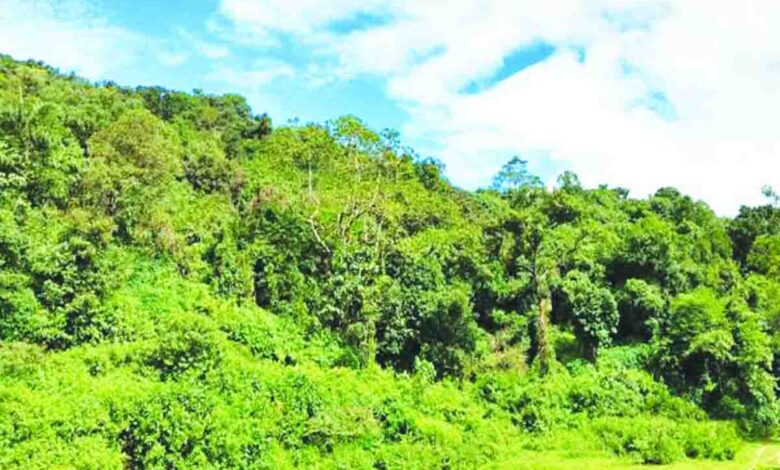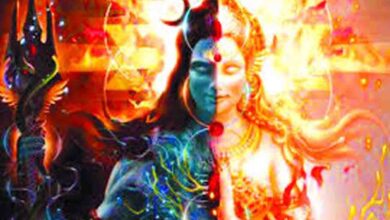GUEST COLUMN : Diversity of life embodies eternity of life

 Vir Singh
Vir Singh
Thomas E Lovejoy, an American ecologist popular as the Godfather of Biodiversity, poignantly remarked, “The ultimate irony of organic evolution may be that in the instant of achieving self-understanding through the mind of man, life may have doomed its most beautiful creations.”
At the heart of life’s diversity lies a fundamental truth: everything is related with everything. Life embodies a cosmic narrative, a captivating saga of evolution illuminated by the brilliance of existence. Biodiversity is the ongoing narrative of life’s perpetuity—the tale of living light (the light transformed into life through photosynthesis) manifesting in myriad forms across the biosphere, embracing diversity of life. The creative potential of light is boundless, unleashing a cascade of evolutionary innovations, shaping new species, genotypes, and intricate ecosystems. Life, in its ceaseless evolution, propagates biodiversity, perpetuating its own narrative through the multiplication of diverse life forms.
Energy, akin to a coursing river, finds expression through diverse conduits of life. Entropy, the harbinger of chaos, is combatted by the living light’s vibrant essence. To uphold cosmic balance, light must permeate myriad vessels, engendering a plethora of creative expressions. Through the evolution of diverse life forms, energy engages in a symphony of cosmic creativity, transforming light into life-enhancing vitality. Biodiversity, therefore, assumes a pivotal role in fostering cosmic creativity, sustaining the delicate equilibrium vital for cosmic sustainability.
Eco-philosophy embraces the diversity of life (biodiversity or biological diversity) as a core concept in the construction of a new world. Eco-philosopher Henryk Skolimowski eloquently articulated the profound interconnectedness between humanity and nature, emphasising the intrinsic value of biodiversity within the fabric of existence. From an eco-philosophical standpoint, biodiversity transcends mere biological diversity; it embodies the very essence of life, weaving together a complex web of interdependence and co-creation.
At its core, biodiversity reflects the myriad expressions of life’s creativity, encompassing the rich spectrum of species, ecosystems, and genetic diversity that ecstatically inhabit our planet. Skolimowski’s insights prompt us to perceive biodiversity not merely as a resource to be exploited, but as a sacred inheritance, a manifestation of the divine intelligence imbued within the natural world.
From the smallest microorganism to the majestic redwoods, each entity contributes to the intricate symphony of life, playing a vital role in sustaining ecological balance and resilience. In Skolimowski’s vision, biodiversity embodies the very soul of Gaia, the living Earth, whose ecosystems pulsate with vitality and harmony.
Consider a scenario where life exists solely within individual entities of a single species. Such a monoculture would be inherently precarious, lacking resilience and stability. Life’s continuity hinges on diversity; hence, it proliferates into populations, fortifying its sustainability. Yet, the pinnacle of sustainability is achieved through the orchestration of communities—interdependent ecosystems wherein myriad species coexist in harmonious synergy. The proliferation of such ecosystems across vast landscapes culminates in the integrated biosphere, epitomising life’s eternal essence.
Biodiversity renders life resilient against climatic vagaries, fostering communities capable of withstanding adversity. Daniel Quinn underscores this resilience, stating, “Diversity is a survival factor for the community itself.” A rich repository of biodiversity ensures the continuity of biogeochemical cycles, sustaining the dynamism of the biosphere’s material and energy flows. Moreover, biodiversity fosters ecological equilibrium, preserving the biosphere’s life-sustaining functions.
The organisation of life into five kingdoms or three ‘super kingdoms’ safeguards against catastrophic events, ensuring the perpetuity of life. With such pervasive biodiversity, complete extinction becomes untenable, aligning with the immutable law of light—the eternity of life.
Diversity of life is the cornerstone of life’s perpetuity, imparting resilience and vitality across the globe. As stewards of this wondrous diversity, it is incumbent upon us to cherish and preserve the kaleidoscope of life for generations to come. Furthermore, biodiversity serves as a source of profound inspiration and spiritual nourishment for humanity. As we immerse ourselves in the natural world, we awaken to the inherent wisdom encoded within its ecosystems, learning timeless lessons of interconnectedness, adaptation and coexistence. Eco-philosophy invites us to cultivate a deep reverence for biodiversity, recognising it as a sacred expression of the divine unfolding within creation.
Moreover, biodiversity holds the key to humanity’s survival and flourishing in an era of unprecedented environmental challenges. As climate change accelerates and ecosystems face escalating threats, Skolimowski’s wisdom urges us to rekindle our kinship with nature and embrace a paradigm of ecological stewardship. By safeguarding biodiversity and restoring balance to our planet’s ecosystems, we honour the intergenerational covenant of life, ensuring a legacy of abundance and resilience for future generations.
Henryk Skolimowski’s eco-philosophy, in essence, offers a profound testament to the intrinsic value of biodiversity within the cosmic symphony of existence. By embracing biodiversity as a sacred inheritance and embracing our role as custodians of the Earth, we can forge a path towards a more harmonious and sustainable future for all life on our precious planet.
(The author is professor emeritus of environmental science, GB Pant University of Agriculture and Technology. Views expressed are personal)






